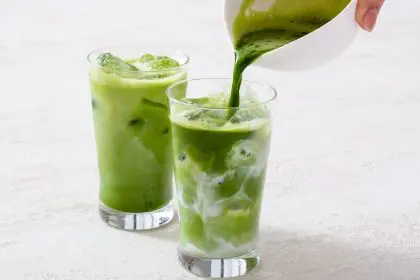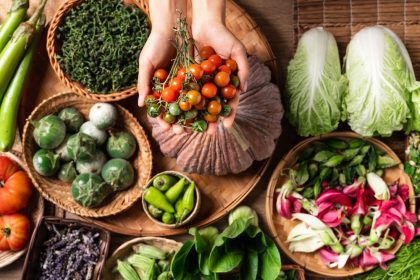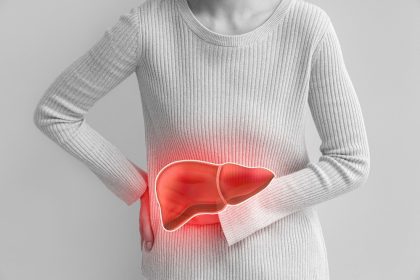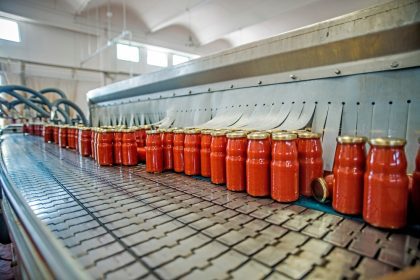The liver stands as one of the body’s most remarkable and resilient organs, tasked with over 500 vital functions including filtering toxins, metabolizing nutrients, producing essential proteins, and storing vitamins. Despite its remarkable regenerative abilities, modern lifestyle factors—processed foods, environmental pollutants, alcohol consumption, and chronic stress—place unprecedented burdens on liver function. As interest in natural health solutions grows, specific tea combinations have emerged as promising supporters of liver health, offering gentle yet effective compounds that work synergistically to protect and enhance this crucial organ’s performance.
The science behind tea and liver health
Teas contain a diverse array of bioactive compounds including catechins, theaflavins, theabromine, polyphenols, and various antioxidants that interact with liver cells and metabolic pathways in beneficial ways. Unlike pharmaceutical interventions that typically target single mechanisms, tea compounds work through multiple complementary pathways, offering comprehensive support with minimal side effects.
The liver faces constant exposure to free radicals generated during detoxification processes. Tea polyphenols neutralize these destructive molecules, preventing oxidative damage to liver cells. Additionally, certain tea compounds upregulate the production of glutathione—the body’s master antioxidant—which plays a critical role in liver detoxification pathways.
Beyond antioxidant effects, specific tea constituents demonstrate remarkable abilities to reduce liver inflammation, enhance bile production and flow, support liver cell regeneration, and modulate fat metabolism in the liver. These combined actions make strategic tea consumption a valuable tool for comprehensive liver support.
5 powerful tea combinations for optimal liver function
- Green tea and dandelion root
The pairing of green tea with dandelion root creates a powerhouse combination for liver detoxification and protection. Green tea contains catechins—particularly epigallocatechin gallate (EGCG)—that have demonstrated remarkable liver-protective properties. These compounds activate enzymes involved in toxin elimination while simultaneously reducing oxidative stress within liver tissue.
Dandelion root complements these effects by stimulating bile production and flow, a critical aspect of the liver’s detoxification process. This increased bile flow helps transport processed toxins out of the liver and into the digestive tract for elimination. Dandelion also contains taraxacin and taraxasterol, compounds that support liver cell function and regeneration.
When brewed together, these plants create a mild, pleasant-tasting tea that works on multiple aspects of liver health simultaneously. For enhanced effects, this combination is often consumed daily for 3-4 weeks as a gentle liver cleanse, particularly beneficial after periods of dietary excess or increased toxin exposure.
- Milk thistle and peppermint tea
Milk thistle stands as perhaps the most well-researched hepatoprotective herb, containing silymarin—a flavonoid complex with remarkable liver-regenerating properties. Silymarin helps stabilize liver cell membranes, preventing toxins from entering, while stimulating protein synthesis needed for cell repair and regeneration.
Peppermint creates an ideal partner for milk thistle, as its menthol content relaxes bile ducts, allowing for improved bile flow and more efficient toxin elimination. Peppermint also contains rosmarinic acid, a polyphenol with both antioxidant and anti-inflammatory properties beneficial to liver tissue.
The resulting tea offers a refreshing flavor profile that masks milk thistle’s natural bitterness. This combination works particularly well for supporting liver recovery after medication use, alcohol consumption, or exposure to environmental toxins. The cooling properties of peppermint also make this blend suitable for those with liver-related heat signs according to traditional medicine systems.
- Turmeric and ginger infusion
Turmeric contains curcumin, a potent anti-inflammatory compound that specifically targets liver inflammation while enhancing the organ’s detoxification pathways. Curcumin increases the production of glutathione S-transferase, an enzyme critical for binding toxins and preparing them for elimination. Additionally, turmeric helps prevent the accumulation of fat in liver cells, addressing a growing concern with non-alcoholic fatty liver disease.
Ginger provides complementary benefits through its gingerol content, which reduces inflammation through different pathways than curcumin, creating a more comprehensive anti-inflammatory effect. Ginger also stimulates circulation to the digestive organs, ensuring optimal blood flow to the liver for enhanced nutrient delivery and toxin removal.
Together, these warming rhizomes create a spicy, invigorating tea with potent liver-supportive properties. The addition of a small amount of black pepper significantly enhances curcumin absorption, making this simple addition worthwhile. This combination proves particularly beneficial for those with liver inflammation, early-stage fatty liver changes, or metabolic syndrome.
- Rooibos and lemon balm blend
Rooibos tea, naturally caffeine-free, contains unique antioxidants including aspalathin and nothofagin that aren’t found in other plants. These compounds specifically target liver tissue, protecting it from oxidative damage while supporting glutathione production. Rooibos also contains quercetin, which helps reduce inflammation and supports liver enzyme function.
Lemon balm brings complementary benefits through its rosmarinic acid content, which both reduces liver inflammation and supports the body’s natural detoxification systems. Additionally, lemon balm’s mild calming properties help reduce stress—an often overlooked factor in liver health, as chronic stress hormones can impair optimal liver function.
This pleasant-tasting, caffeine-free combination makes an ideal evening liver tonic that won’t disrupt sleep. The gentle nature of these herbs makes this blend suitable for daily long-term consumption, offering cumulative benefits for liver cell protection. This combination works well for those seeking liver support without stimulating effects, including people with existing liver conditions who need to avoid caffeine.
- Schisandra berry and hibiscus tea
Schisandra berries contain unique compounds called lignans that specifically support liver phase I and phase II detoxification pathways. These berries have adapted to survive in harsh conditions, developing protective compounds that similarly protect liver cells when consumed. Schisandra has the remarkable ability to both stimulate and calm the liver as needed, helping to regulate its function rather than simply pushing activity in one direction.
Hibiscus contributes organic acids and anthocyanins that reduce fatty deposits in the liver while supporting healthy blood flow to the organ. Hibiscus also helps normalize liver enzyme levels and reduces oxidative stress markers in liver tissue. The slight acidity of hibiscus helps extract more of schisandra’s beneficial compounds during brewing.
The resulting deep red tea offers a complex flavor profile—simultaneously sweet, sour, salty, bitter, and pungent—that reflects the comprehensive nature of its effects on liver physiology. This combination particularly excels at supporting liver function for those exposed to environmental toxins or those with sluggish liver function resulting in skin issues, hormone imbalances, or digestive complaints.
How to prepare and consume liver-supportive teas
The preparation method significantly impacts the therapeutic value of these tea combinations. For optimal extraction of beneficial compounds, most liver-supportive herbs benefit from longer steeping times than typical teas. A standard approach involves using one teaspoon of each herb (two teaspoons total for a combination) per cup of water, then steeping covered for 10-15 minutes.
Water temperature also matters—green tea components extract best at lower temperatures (around 175°F/80°C) to preserve delicate catechins, while most roots and berries require near-boiling water to release their beneficial compounds. For combinations containing both delicate and dense ingredients, bringing water to a boil, allowing it to cool for two minutes, then steeping provides a good compromise.
The timing of consumption can enhance effectiveness. A cup of liver-supportive tea consumed 30 minutes before breakfast helps stimulate morning bile flow, supporting the body’s natural detoxification rhythm. For those focusing on liver repair, an additional cup before bed provides compounds that work during the liver’s nighttime regeneration phase.
Consistency proves more important than quantity for liver support. Daily consumption of modest amounts (1-2 cups) typically yields better results than occasional larger quantities. Most people notice subtle improvements within 2-3 weeks of regular consumption, with more significant benefits manifesting after 6-8 weeks as the liver’s condition gradually improves.
Supporting your tea regimen with liver-friendly habits
While tea combinations offer valuable support, their benefits multiply when paired with other liver-friendly practices. Adequate hydration with pure water remains foundational, as the liver requires sufficient fluid to process toxins effectively. Most adults benefit from consuming half their body weight in ounces daily, with additional amounts during hot weather or exercise.
Dietary choices strongly impact liver health, with organic produce, high-fiber foods, lean proteins, and healthy fats supporting optimal function. Cruciferous vegetables (broccoli, cabbage, Brussels sprouts) deserve special mention, as they contain compounds that activate the same detoxification pathways supported by many liver teas.
Regular movement and exercise support liver health through improved circulation, enhanced lymphatic flow, and better glucose regulation—all factors that reduce the liver’s workload. Even modest activity like daily walking yields significant benefits for liver function when practiced consistently.
Stress management practices complement liver-supportive teas remarkably well. Chronic stress triggers inflammatory responses that can impair liver function, while relaxation practices like meditation, deep breathing, and adequate sleep support the organ’s natural regenerative capacity.
Precautions and considerations
While tea-based liver support offers gentle, natural benefits for most people, certain situations warrant caution. Those taking prescription medications should consult healthcare providers before beginning regular consumption of liver-supportive teas, as some herb-drug interactions exist. Milk thistle, for example, can alter the metabolism of certain medications by affecting liver enzymes.
Individuals with existing liver disease require professional guidance when incorporating therapeutic teas into their regimen. While these combinations generally support liver health, specific liver conditions may warrant customized approaches under professional supervision.
Pregnant and breastfeeding women should exercise particular caution with herbal combinations. While many of these teas are considered safe in moderation, certain liver-stimulating herbs may not be appropriate during these sensitive periods.
Quality and sourcing of herbs significantly impact their therapeutic value. Organic, properly identified herbs from reputable sources minimize the risk of contamination with pesticides or misidentified plants—an important consideration for liver health, as the organ would bear the burden of processing any contaminants.
The liver’s vital role in human health cannot be overstated, nor can the impact of supporting its function naturally. Through thoughtful combinations of therapeutic teas, complementary lifestyle practices, and awareness of individual needs, liver health can be meaningfully enhanced without harsh interventions. The ancient wisdom of herbal medicine, now increasingly validated by modern research, offers promising paths for nurturing this remarkable organ that faithfully processes everything we consume and encounter in our environment.

















